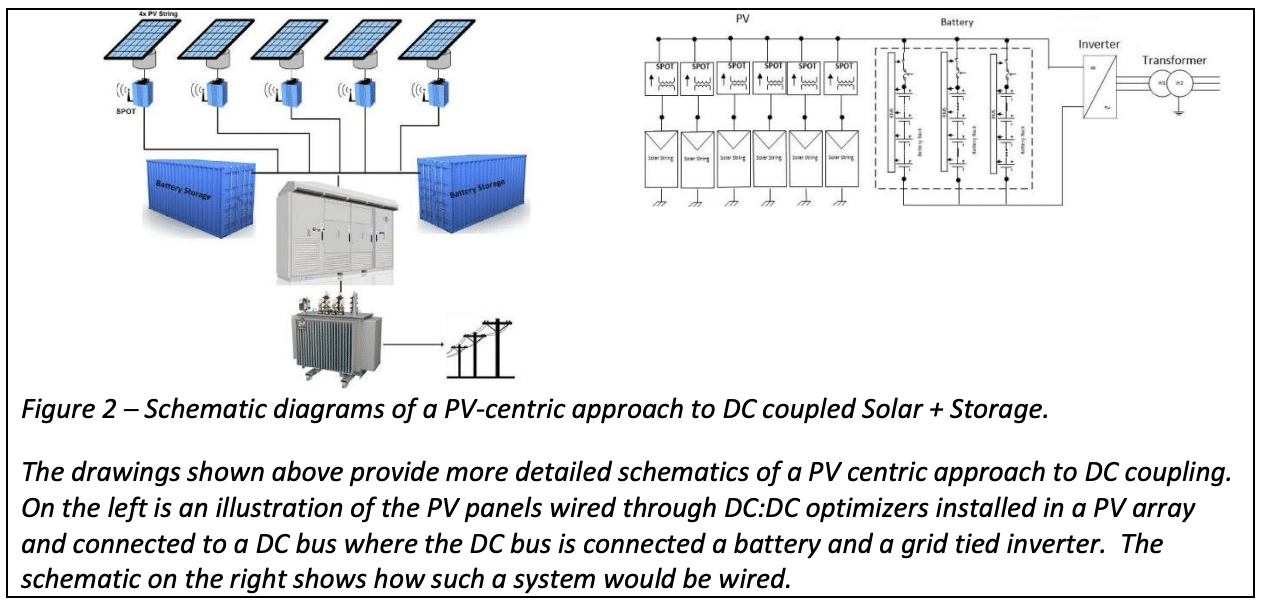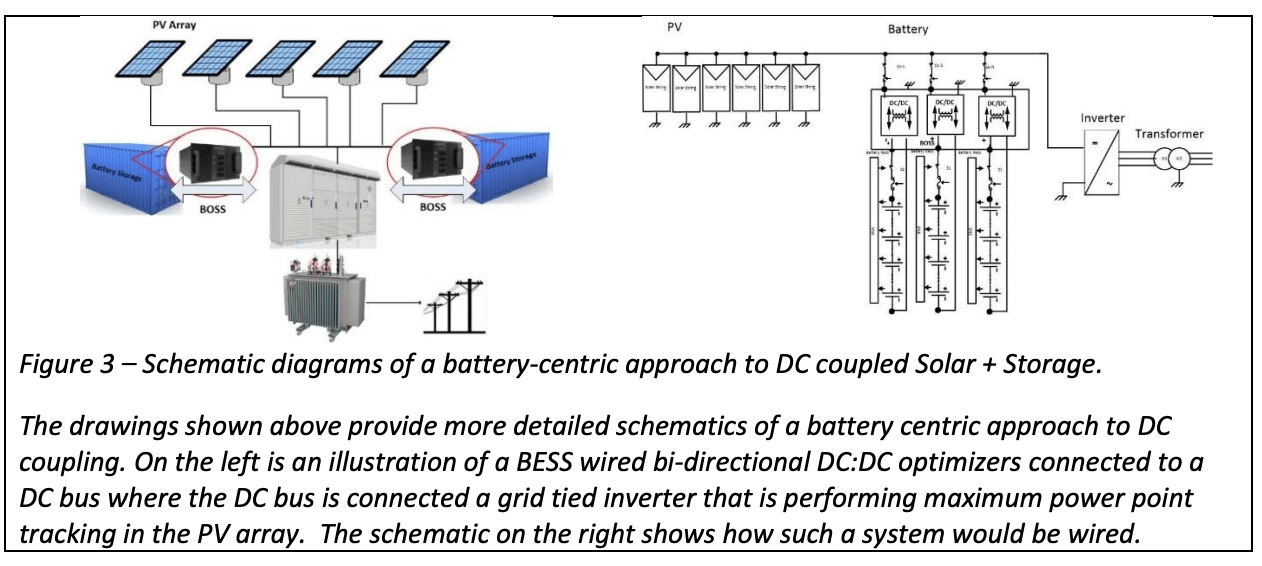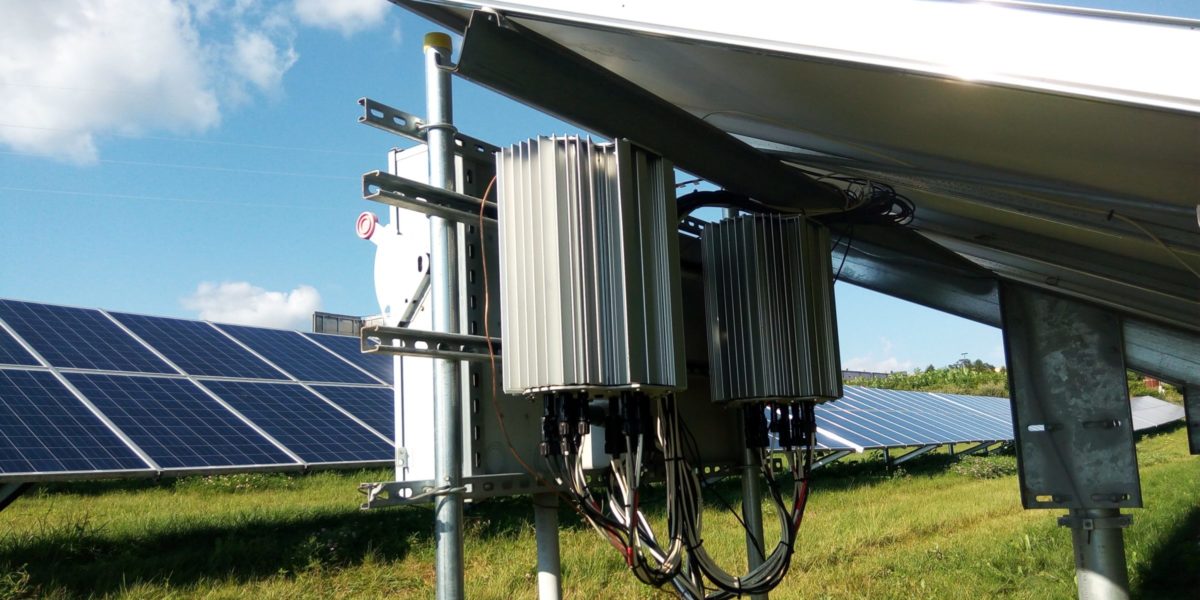Anyone installing a distributed solar-plus-storage system has to make a decision on how to couple the solar side with the energy storage side. Alencon has released a white paper comparing the two main DC coupling approaches to combining solar and storage.
DC coupling describes a layout where the solar array and battery share the same inverter, with configurations coined by Alencon as “PV-centric” and “battery-centric.”
PV-centric
PV-centric coupling is when a unidirectional DC:DC converter is installed between the PV panels and a DC bus that connects a battery energy storage system with an inverter. In this arrangement, the power flows from the PV panels in one direction through the DC:DC converter to directly charge a battery energy storage system, outlined in the schematic below.
In this layout, it is the job of the DC optimizer, an Alecon unit is shown here, to optimally harvest solar energy by way of maximum power point tracking (MPPT).

Battery-centric
Battery-centric coupling describes when the DC:DC converter is installed between the battery racks and a DC bus connected to an inverter while the inverter is connected directly to the PV system. In this case, power flows through one of Alencon’s optimizer products in a bi-directional manner to charge and discharge the battery while the inverter harvests power from the PV array.

While Alencon shares that a battery-centric approach appears to be the more valuable of the two at face value, PV-centric has some distinct advantages in specific scenarios.
One of these scenarios comes from projects using a bi-directional battery storage inverter, one which can’t perform MPPT. In this case, the optimizer would perform that function, opening up the ability of the solar-plus-storage system to benefit from more revenue streams, like grid services, through the use of the bi-directional inverter.
Additionally, this configuration can be useful for campus-wide installations, where arrays are highly distributed over a confined area. In this scenario, MPPTs distributed across the PV array can help significantly increase PV yield.
Lastly, the PV-centric model shines in instances of maximizing DC overbuilds. As it becomes more economical to overbuild projects and add storage for the energy that would otherwise be clipped, the PV-centric approach, according to Alencon, “facilitates larger DC ratios than a typical PV inverter would allow by allowing more granular control and curtailment of PV production during edge-case scenarios when the battery is full and the PV is overproducing.”
The battery-centric approach is more about cost effectiveness. When deploying DC-coupled solar-plus-storage, the power rating of the PV array is typically much higher than the power rating of the battery, typically 3:1. When sizing power electronics like DC:DC converters, the number of devices needed is determined by the power rating of storage, meaning that if the power electronics are sized to the power rating of the battery — the battery-centric approach will be more cost effective.
This content is protected by copyright and may not be reused. If you want to cooperate with us and would like to reuse some of our content, please contact: editors@pv-magazine.com.









By submitting this form you agree to pv magazine using your data for the purposes of publishing your comment.
Your personal data will only be disclosed or otherwise transmitted to third parties for the purposes of spam filtering or if this is necessary for technical maintenance of the website. Any other transfer to third parties will not take place unless this is justified on the basis of applicable data protection regulations or if pv magazine is legally obliged to do so.
You may revoke this consent at any time with effect for the future, in which case your personal data will be deleted immediately. Otherwise, your data will be deleted if pv magazine has processed your request or the purpose of data storage is fulfilled.
Further information on data privacy can be found in our Data Protection Policy.